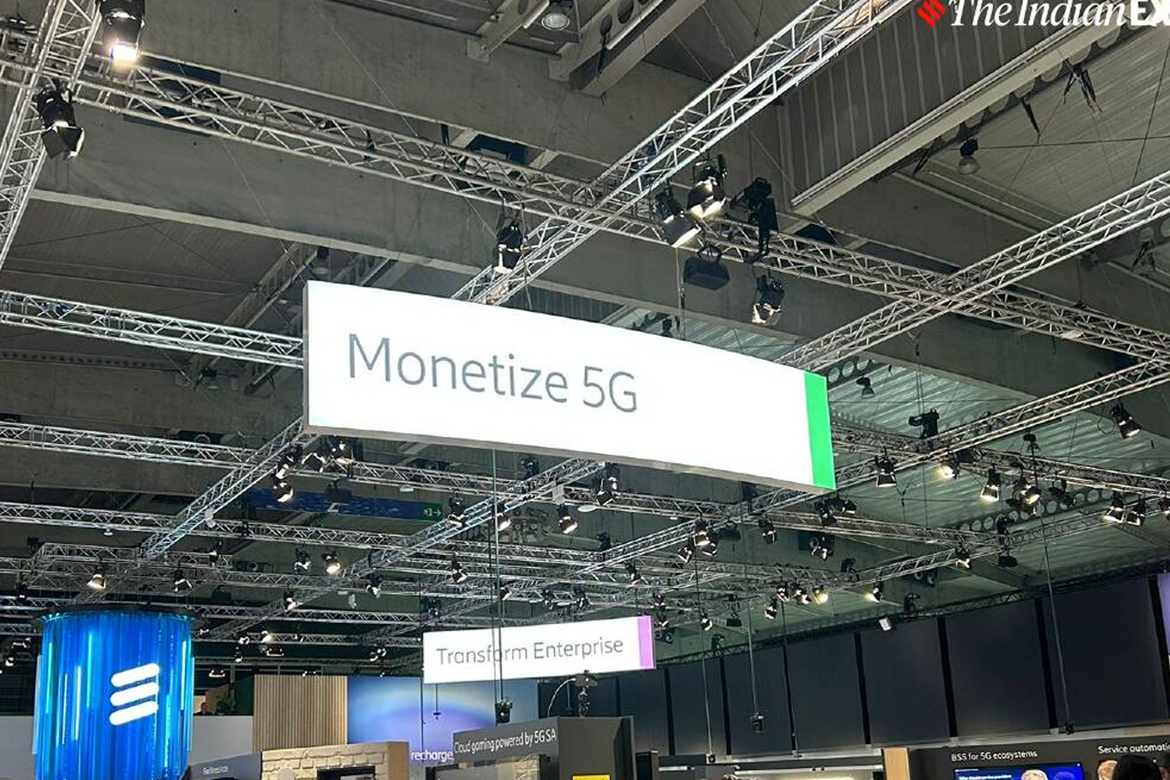Trade experts and insiders said the conversations have moved beyond upload speeds and faster download data. Instead, the industry is thinking about how to capitalise on the value of 5G.
The 5G sales pitch was everywhere to be seen at the Mobile World Congress which ended last week in Barcelona. But for many executives gathered at the world’s most influential exhibition for the connectivity industry, the sticking point was how to move beyond the rollout phase and create new business opportunities so that every stakeholder involved started making money.
“If you are about to change your phone, it’s likely that you will get a 5G smartphone, and thereby also a 5G subscription. So there is an automatic update just for that. But then there’s also a need for some users that want higher speed, or they want to do gaming perhaps,” Patrik Cerwall, Head of Strategic Marketing, Business Area Networks at Ericsson told indianexpress.com in an interview.
For Cerwall, 5G as a service is a huge opportunity going forward and operators in Europe, the US, Japan and some parts of the Middle East are finding new ways to increase revenue streams. In India, too, telcos are working on the same lines to capitalise on 5G subscriptions and that is where the money is. “There’s a new service innovation that’s happening,” Cerwall added, but it also depends on how you manage to sell it. He cites the example of how some operators offer consumers cloud gaming as a service in their respective countries which opens new opportunities for them to charge users for advanced packages for network slicing and guarantee latency.
5G or fifth-generation mobile services are the next generation of mobile internet connection and offer much faster data download and upload speed. 5G services began to roll out in India last year from Reliance Jio and Airtel. Both operators have promised to complete the 5G rollout across major Indian cities in the next few months. Airtel has over 10 million 5G users in the country already.
But building 5G networks is capital intensive and thus requires huge investments. In return, 5G brings massive improvements to network speed and the volume of data that can be captured and processed, opening new use cases and revenue opportunities that were not available during the 3G-4G era.
“5G investments will only be recuperated if they can be monetised, unless they mean something which is consumable by the end user,” voiced Avneesh Prakash, Vice President of Mobility and IoT at Tata Communications. Prakash, who is heading Tata Communications’ end-to-end mobility platform MOVE, says there are potential benefits of 5G to users and his clients – in particular – understand that well too.
One key selling point of 5G beyond smartphones will be connected cars. “They [Car manufacturers] need to conserve money. They need to do it efficiently, they need to generate new revenue streams. The whole model of the automotive industry is changing from ownership to subscription-based,” explained Prakash. “All OEMs have an aspiration to not just focus on the revenue stream of selling the cars, but also being participative in the service economy.”
Prakash said connected cars are also one space that would see immediate benefits, both from usage and monetisation. Think about assured over-the-air software updates or entertainment being offered in a car, whether that’s movies or music or gaming. “Cars will turn into experience nodes and that will be monetisable.”
Trade experts and insiders said the conversations have moved beyond upload speeds and faster download data. Instead, the industry is thinking about how to capitalise on the value of 5G. According to Prakash, 5G is bringing many sectors together and jointly working on solutions to the problems that couldn’t be addressed previously due to the lack of the right technology and instruction. He says “this should result and will result in actually saleable propositions to the end user”, especially in the case of the automobile industry.
For now, 5G has been talked about more from a consumer point of view but the real cash cow could be the enterprise sector which may help scale the applicability of 5G in real terms and bring cash to expand the networks. “Monetisation of 5G is not just consumers, it’s also enterprise,” agreed Cerwall. The enterprise use cases of 5G can vary from different productivity solutions to IT support and security features.
While Cerwall sees the enterprise as a part of a long time, he said, at least for now, it’s the consumer business that is driving most of the 5G uptake. “It depends much on price positioning in the market, and how the operator actually decides to go to market on it,” he said, when asked if the enterprise segment has a better chance of raking in more cash from consumers in the long run.
There is also the opportunity if 5G to be used as a network backbone for private enterprise upgrades. But in the consumer use case, growth may take longer than it was once anticipated. The slowdown in the smartphone market which still has a central role to play in 5G subscription upgrades as well as potential traffic hikes on the horizon could dampen the potential of 5G and its reach.
News Source: The Indian Express



